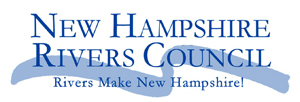Like other environmental indicator species, the presence (or absence) of wild brook trout is often a reflection of our imprint on natural landscapes. When forested lands are converted to other uses and we do not maintain water quality and natural hydrological processes, we risk jeopardizing those aquatic species which have evolved to live in our rivers and streams. Brook trout require cooler, well oxygenated water throughout the summer, suitable spawning habitat, and a diversity of habitat types to grow. Although the central and northern portions of the state support a broad distribution of wild brook trout, there are several isolated streams in the south which also contain self-sustaining populations. The southern streams tend to be strongly influenced by natural springs which help contribute to flow volume and cooler water temperatures.

A wild population of Brook Trout was first documented in McQuesten Brook in 2009. Beyond the initial revelation that brook trout were found in such an urbanized area, the number and size of these fish were very remarkable. Being in such densely developed area, McQuesten Brook is far from being a quintessential brook trout stream. A high density of impervious surfaces, several dams and undersized culverts, removal of riparian corridors, and the introductions of large volumes of sand were threatening the resiliency of the brook trout population. An estimate of 34% of the land cover in the watershed consisted of impervious surfaces. For comparison, watersheds in Maryland with impervious cover densities greater than 4% no longer support wild brook trout.
Given the magnitude of all the watershed level cumulative impacts, we continue to be in awe that this stream can support such a robust brook trout population. Ongoing monitoring through electrofishing surveys in 2023 continue to show McQuesten Brook not only supports a healthy brook trout population, the stream also has the ability to create extremely large fish. Our largest fish captured this past summer was close to 11 inches long. The steady supply of unusually cool water apparently has the ability to offset enough of stressors so their presence can be maintained. Hourly summer water temperature was collected for 12 consecutive years. Although drastic upward swings in temperature were observed immediately after rain events, values quickly returned to more tolerable conditions. During this monitoring, the average summer stream temperature at the origin of the stream in Manchester was a chilling 55.2°F.

The desire to ensure brook trout are secure and water quality is improved in McQuesten Brook has been and will continue to be a strong motivation. Since trout were first documented, several monumental steps have been implemented to maintain these objectives. Unfortunately, the introduction of sand continues to be a persistent problem. Despite the presence of large adult brook trout in McQuesten Brook, surveys from 2023 indicate a limited number of juvenile fish. This is likely attributed to deposited brook trout eggs not being able to successfully incubate after being covered with the shifting sand.
The New Hampshire Fish and Game Department looks forward to working with project partners to assist with monitoring and future restoration and enhancement projects. The development of a watershed management plan, dam and culvert removals, public engagement, and partner collaboration should be seen as inspiration for other watershed level restoration efforts. If effective strategies can be initiated in an area with all the challenges associated with an urbanized environment, similar work can be done in other New Hampshire Watersheds.





